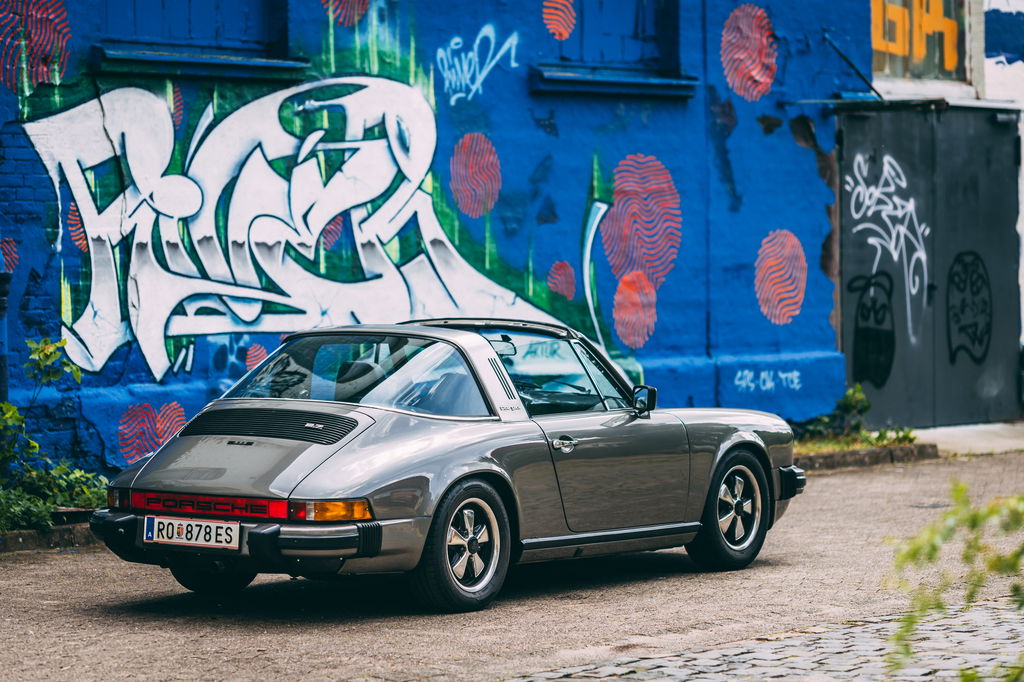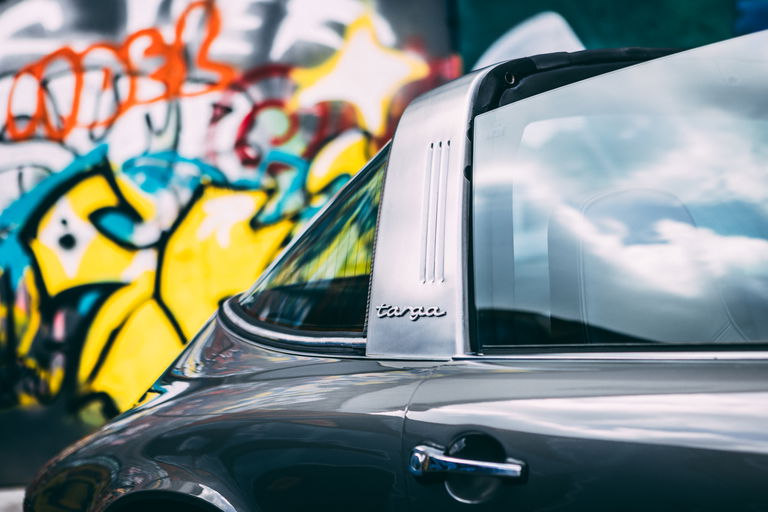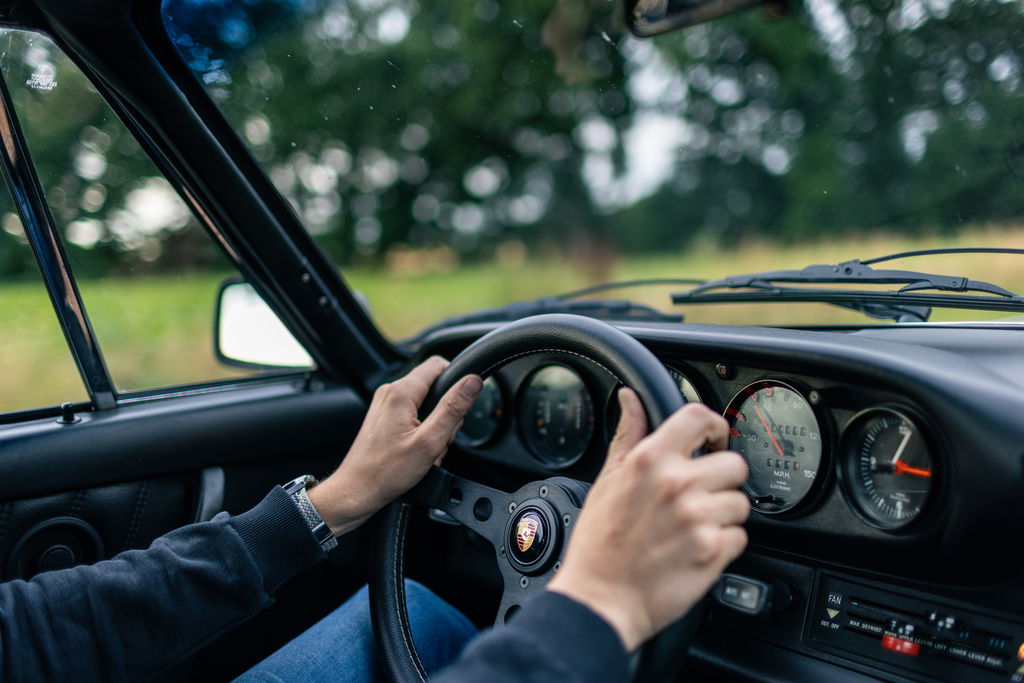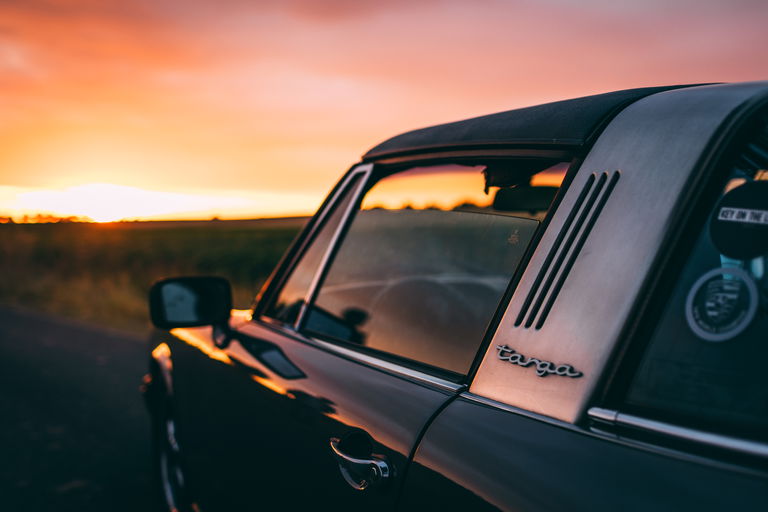Richard Lindhorst is the editor-in-chief of Elferspot.com and has been writing about the world of the Porsche 911, its derivatives, and all other sports cars from Zuffenhausen for years. He has been driving Porsches since 2011 and works on them himself.
Do you have a tip for a story or just want to get in touch with him? You can find him on Instagram at @rchrdlndhrst.
Living with a classic Porsche – A summer with a 911 Targa
Our society has experienced incredible technological advances over the past century. What was considered cutting-edge 30 years ago is often nothing more than old stuff today. To a certain extent, this also applies to the automobile. Old cars with chrome and without regulated catalytic converters or air conditioning are hardly part of the street scene today. But what is living with a classic Porsche actually like? Is now perhaps the perfect time to enjoy these historic cars? After a summer with a 1977 Porsche 911 Targa, known as a narrow G-Model, this question is on my mind more than ever…
A child of the 90s meets the sports car scale of the 70s
Like most other petrolheads, I’m a big fan of the cars of my youth. In my particular case, that means Porsches from the late 90s and early 2000s. My dream car is the Porsche 996 GT3 which could hardly be further away from a narrow G-Model. Should the almost 50-year-old Targa really have a chance of winning my heart? The summer of 2025 should show.

My first encounter with the 1977 Porsche 911 Targa has a profound effect on me. What a beautiful, graceful shape! The anthracite gray metallic chrome model with its stylish Targa bar stands on classic Fuchs rims and has a charming, understated elegance that modern cars cannot match. How must the first owner have felt when he picked it up at the Porsche Center in 1977?
How must the first owner have felt when he picked it up at the Porsche Center in 1977?
48 years ago, the 165 hp 2.7 liter engine was a real statement. It accelerated the 1,120 kilogram lightweight 911 to 100 km/h in 7.5 seconds and up to a top speed of 215 km/h. Even today, that is still respectable performance. I realize that at the end of the 1970s, this car was one of the absolute pinnacles of motoring. A certain awe spreads.

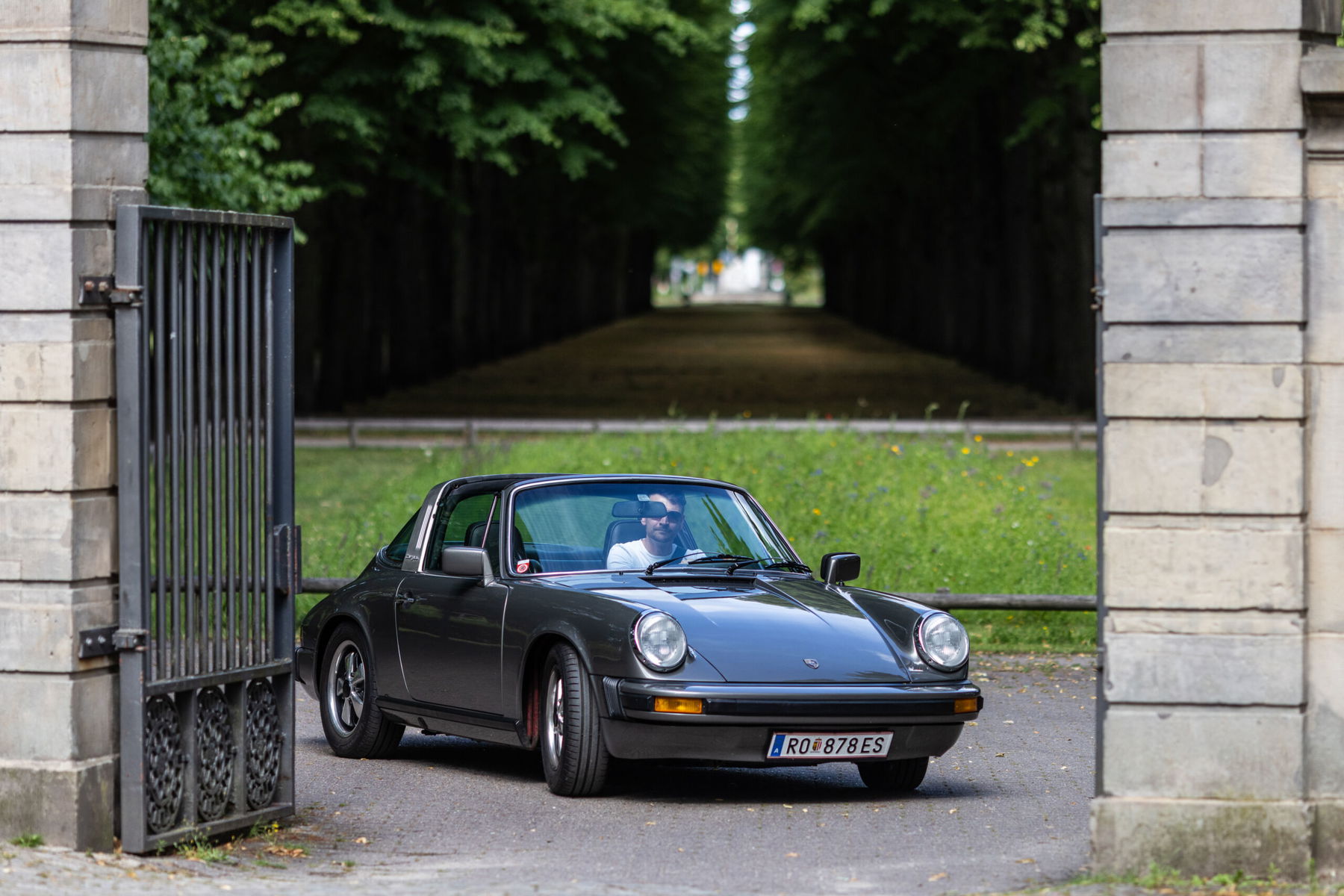
The “sizzling connection of a narrow-cut sports car”
Our world of social media with its lots of beautifully edited clips rarely reveals the whole truth. In the vast majority of cases it simply transfigures it. That’s why some people chase after a picture or video they’ve seen on Instagram or YouTube without knowing what they’re actually getting themselves into. Could it be the same story with classic Porsches? What is it like with such an old 911? Is the reality in a five-decade-old 911 Targa not as rosy as it seems?
The first thing you notice when you get in: The narrow G-Model is a snug fit. Its windshield comes very close to you and the footwell is also narrow. But there is no high center tunnel between the seats, which keeps the feeling of space surprisingly airy. Nevertheless, I understand exactly what Rainer Buchmann means by the “sizzling connection of a narrow sports car”.
Living with a classic Porsche 911 also means missing comfort features. But is it a showstopper or a character trait?
But what is actually transfiguration and what is charm? Well, when it comes to ergonomics, you have to be aware that the peculiarities of a classic 911 sometimes go so far that it simply doesn’t fit everyone. Narrow shoes are advisable for shoe sizes 45 and above. For wide sneakers, the accelerator and brake might be a little too close together. In addition, the steering wheel is not adjustable – taller drivers should consider a hub extension or a different steering wheel.
As is usual with vehicles from the 1970s, there is no power steering in the Porsche 911 G-Model. This is mainly noticeable when parking and in tight bends. So it is primarily a matter of getting used to it rather than a problem. It also provides such detailed feedback that no new car is capable of. In this respect, the rack-and-pinion steering is more of a joy than a real disadvantage. It almost feels like I’m directly connected to every pebble on the road.
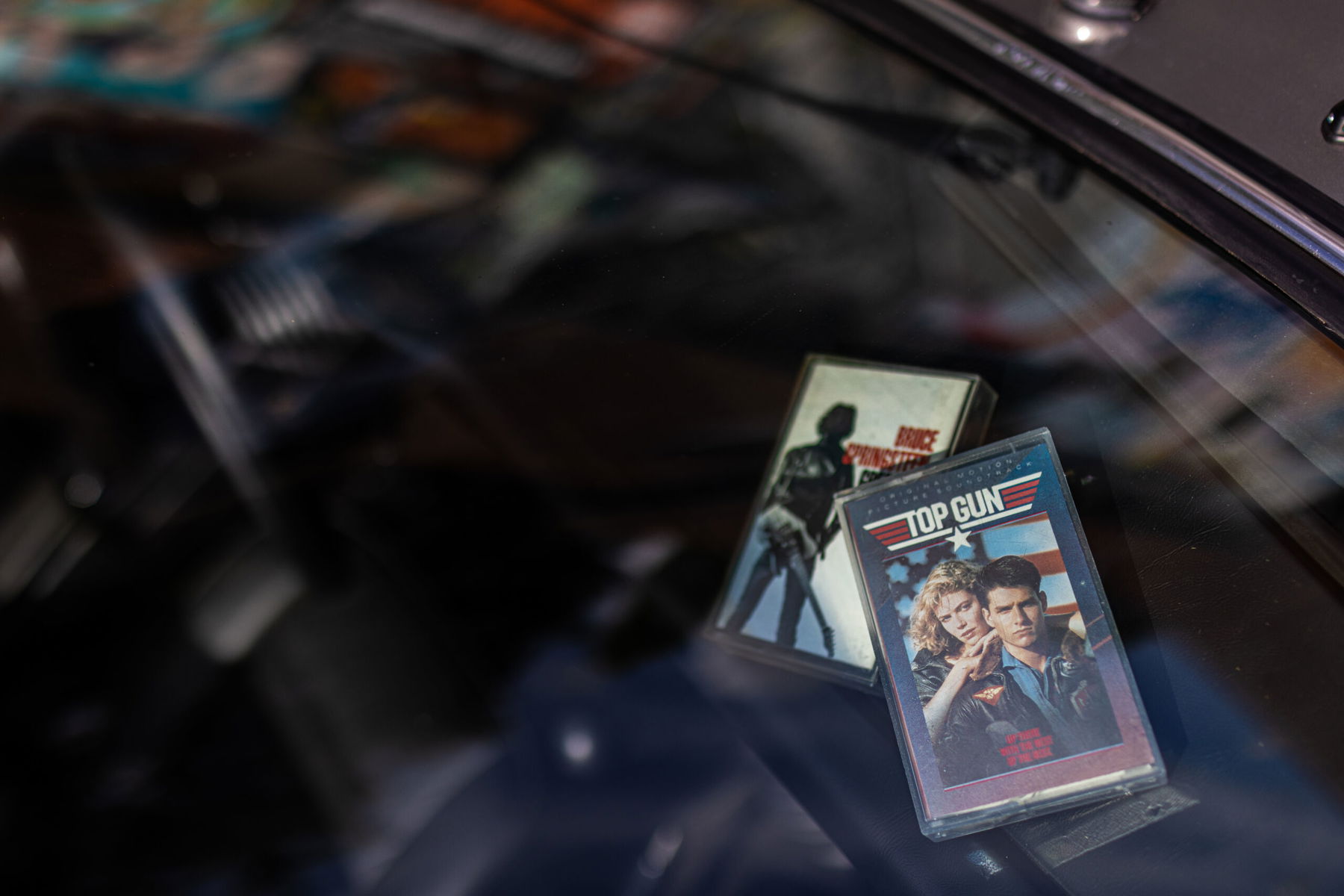
Targa roof beats air conditioning and a 915 transmission that makes you happy
I also don’t really miss the lack of air conditioning in the Targa. After all, you can simply take the roof off on warm days, stow it in the spacious trunk and enjoy the convertible feeling. Its heating also works excellently, making open-top driving a real pleasure even on a cool morning or evening. On hot days, however, I would avoid city traffic – for the sake of both the car and its occupants.


This narrow Targa has a superbly overhauled 915 transmission that takes very little getting used to. The gears can be engaged crisply in all gears, and you get used to the lack of center centering very quickly. “With such a good transmission, who needs a G50?” I ask myself. At first glance, the less contemporary aspects of the oldie are more of a minor loss of comfort that you can certainly live with.
What are the downsides of living with a classic Porsche?
It’s easy to forgive a few weaknesses in such a beautiful classic. But you should at least be aware of what you are getting into. To experience this in fast-forward, nothing is better than an extensive road trip. In this case, 770 kilometers in one day. On numerous kilometers of freeway, winding country roads and inner-city after-work traffic, a few things became apparent that you have to get used to when driving a narrow G-model.


First of all, there is the roof. In contrast to today’s perfectly finished cars, early Porsche 911 Targa models were not completely sealed ex works. So of course you have to be prepared for increased wind noise. At normal highway speeds of around 120 km/h, you have to talk louder, but you don’t need hearing protection – even with the Targa roof open. With regard to the interior, however, you should avoid driving in pouring rain.

While fuel consumption remains within acceptable limits at around 12.5 liters of Super Plus per 100 kilometers, you always have to keep an eye on the oil level. The 2.7-liter units with magnesium engine cases in particular consume the odd millilitre or two and sometimes lose a little of the black gold. About one liter of oil consumption per 1,000 kilometers is nothing too unusual. Checking the oil level quickly becomes part of the routine when stopping to refuel.
The cheapest air-cooled 911s, i.e. narrow G-Models or 911 SC, will cost from around 45,000 euros in 2025, at least in running order. For well-maintained models, however, you should plan on upwards of 60,000 euros.
The Porsche 911 Targa of the 1976 and 1977 model years originally cost from DM 36,850. In the last model year, the base price was DM 39,800.
In the 1976 and 1977 model years, the Porsche 911 Targa was delivered with a 2.7-liter six-cylinder boxer engine with 165 hp. It has 235 Nm of torque, weighs 1,120 kg and accelerates from 0-100 km/h in 7.8 seconds (model year 1977: 7.5 seconds).
At the time, Porsche stated 11.4 liters of normal gasoline per 100 kilometers. In practice, however, you should expect something between 12 to 15 liters per 100 kilometers, if you want to have a bit of fun – depending on the route profile, of course.
An old Porsche 911 Targa decelerates – and not just on the road
The increased noise level and the regular oil check already indicate it: you take your time when driving the Targa – in every respect. The deceleration begins even before you set off. What will the weather be like? Will you open the roof or leave it closed for now? Does the engine need a few bursts of throttle at the start? Depending on the engine temperature, the answer may be different… If you are driving with two or even three people – the rear seats offer no less legroom than in a modern 911 – you still have to open the door lock by hand.

As there is neither anti-lock brakes nor an electronic stability program on board a 1977 Porsche 911, you drive with more caution and leave a little bigger gap to the car in front. At the traffic lights, you don’t want to expect the oldie to take off wildly, but rather to handle it gently. No hectic gear changes, clean throttle blips on the downshifts… But if you do give it the spurs, it sounds like you’re in a Porsche 911 RSR. Yet, you still stay within the speed limit.
For me, the G-Model isn’t a classic sports car, but a true classic.
As you treat the Targa with respect and therefore lots of mechanical empathy, it almost forces you to slow down. Inevitably, everything runs a little more slowly than it would in a modern Porsche with all its electronic little helpers and PDK gearbox. Conversely, this also means, of course, that the early G-Model cannot and should not be compared with today’s sports cars. For me, the G-Model isn’t a classic sports car, but a true classic.
When you drive along in the G-Model, you are met with a wave of sympathy
However, there are also metrics in which the G-model is miles ahead of its descendants! Because while driving a modern Porsche 911 can be a source of envy, the interaction with your environment in the old Targa is completely different. After just a few meters, an oncoming driver gives me the thumbs up. Pedestrians also wave, delighted at the sight of the almost 50-year-old sports car. This should be a preview of the months to come.

I am often asked about the Targa when filling up with gas. Contrary to the clichéd assumption that these are mainly older men, it is often children and women who have a positive attitude towards the anthracite gray 911. They simply like it. There are hardly any negative emotions towards it. I get the impression that classic cars are generally more popular in our society than modern sports cars.
This is surprising because the wonderful, free-revving 2.7 liter magnesium engine with its Dansk exhaust system does not hold back in terms of sound. Especially in overrun mode, the Targa sputters merrily along – sometimes even a little too much. If you regularly want to drive to work early in the morning in it, you should have a good relationship with your neighbors or invest in dB-Eaters for the exhaust. After all, despite all the joy of a rich sound, Porsche drivers are all to some extent ambassadors for a thoroughly controversial hobby and should therefore drive responsibly so as not to allow others to enjoy the sound experience too much.
You can still work on the Porsche 911 G-model yourself
It is obvious that an old car needs more attention than a new one. At the very least, you must be prepared to check the oil level regularly in order to enjoy a classic Porsche for a long time. After all, the oil level indicator on the dashboard is more of a guideline, than a precise measuring tool.

But even beyond that, it doesn’t hurt to have at least some sort of technical interest. After five decades, fuses and relays can break. The injection system also needs to be readjusted from time to time. Since the technology itself – compared to modern vehicles – is of manageable complexity, the courageous do-it-yourselfer can do a lot themselves with a little research and initiative, without having to visit a workshop.
A total of 8,182 units of the narrow Porsche 911 G-Model Targa were built between 1975 and 1977.
In principle, air-cooled Porsche 911s are reliable and forgiving. However, maintenance should not be neglected in order to prevent costly defects.
A classic car as motivation to step out of your comfort zone and learn new things
At this point comes a crucial point, which may well open up another hobby: Working on a classic car. In most regions, winter is not a suitable time of year to take your classic car out for a drive anyway. This is where minor maintenance work or a few cosmetic modifications can help to sweeten the winter break. This allows you to learn new things, get to grips with the technology and get to know the car even better.
In the case of the anthracite gray Targa, this means a few beginner-friendly “do-it-yourself projects” over the next few months. After a few thousand kilometers, it deserves new spark plugs and a polish as well as an oil change. Unfortunately, the sun visors are broken off at the hinge – a typical affliction of early G models. Perhaps a wider track would also do it good? So there’s plenty to do before the next Targa update, then under the motto “A winter with a 911 Targa”.
Is now the perfect time to buy a narrow Porsche 911 G-Model?
What is my conclusion after living with a classic Porsche 911 Targa for a summer? It surprised and impressed me! Surprised because I didn’t expect how much of a positive response this car would generate. I was impressed by the driving and acoustic experience. Because the way this oldie releases its power never lets you miss performance in normal road traffic. Even the way up a beautiful mountain road is not a game of patience.

I’ve often found myself thinking that a narrow G-Model really does have its appeal. This is especially true if I don’t have overly sporty expectations. Such an early G-model, i.e. a 911 built between 1973 and 1978, would be worth a sin. Especially as great “drivers”, meaning unrestored, mechanically well-maintained cars with a bit more mileage, are on offer from around 60,000 euros. You surely wouldn’t get a GT3 for that anymore…
After the summer in the Targa, I remember a sentence I once said myself: “I’d rather drive the Route des Grandes Alpes in a cheaper 911 than never finish saving up for the car of my dreams.”
© Pictures: Henner Huflage
Elferspot magazine
You have reached your article limit for this month.
Become an Elferspot Member now and get unlimited access to our Elferspot Magazine and other features!
- No obligations or charges.
- We help you find your dream car: get newly added cars straight into your mailbox.
- Your own watch list for your favorite cars.
- Unlimited access to Elferspot Magazin.
- -10% welcome discount for Elferspot textile products
- Successfully sell your Porsche via Elferspot.

